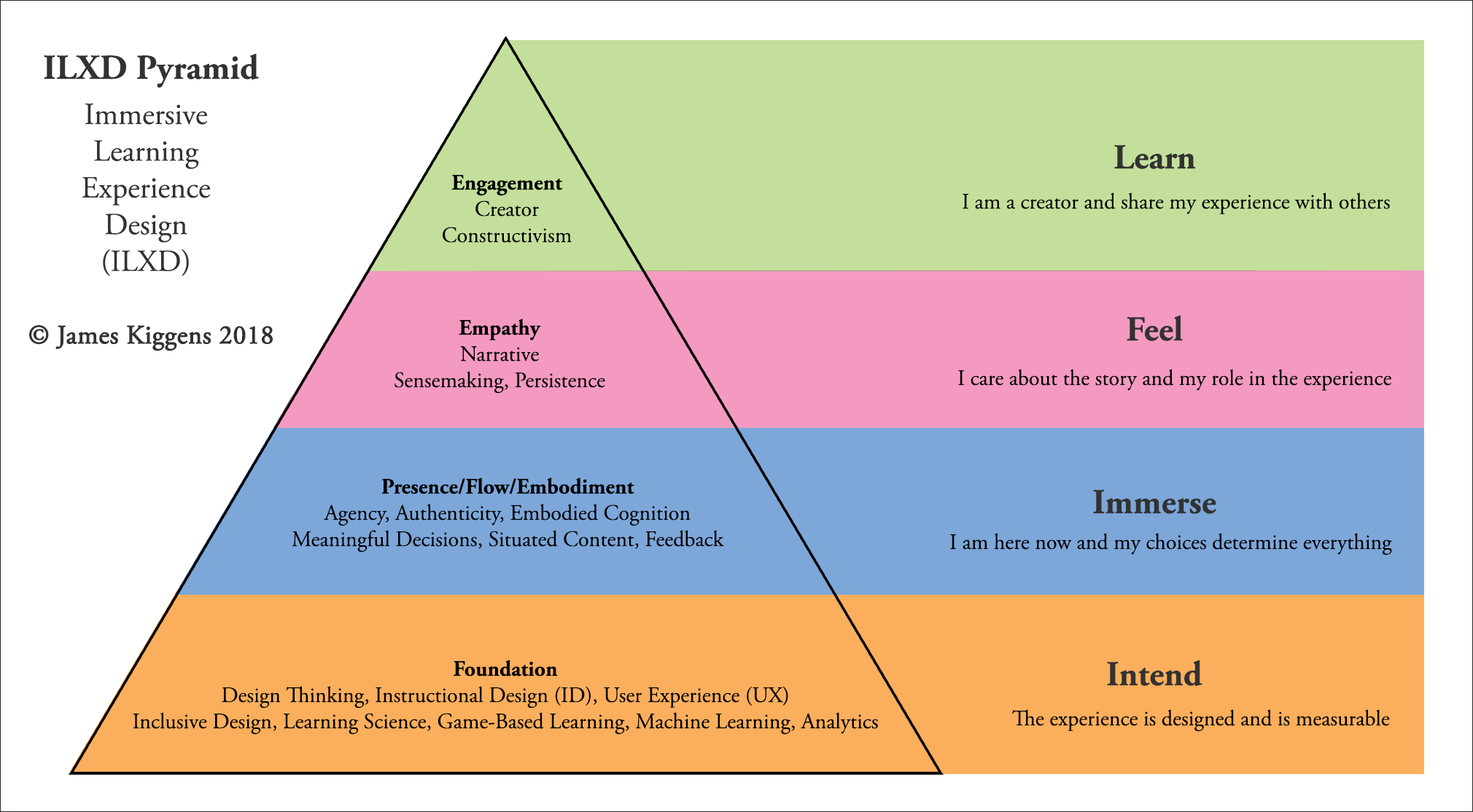Intelligent immersive learning is a paradigm shift that is already underway in higher education. The legacy focus of designing and implementing learning products for institutional needs, practices, and structures is outdated beyond revision or adaption. A fundamental shift in focus is required, with the learner’s experience at the core and the learner’s personalized instructional needs as the overarching guiding framework.
The ILXD model has been developed to serve the shift in focus from producing learning products to producing learning experiences. This paper introduces the design phase and discusses the elements of that model.
The elements of the ILXD model are drawn from a broad array of pedagogy and educational technology topics, including; cognition and learning sciences, game-based learning, design thinking, virtual reality (VR), and artificial intelligence for education (AIEd).
Introduction
Since April of 2016, the Immersive Learning Experience Team at Adtalem Global Education (ATGE) has been exploring a production process to create and deliver intelligent immersive learning experiences for use in professional education and university classes throughout the seven ATGE institutions.
Our experience has been that the technologies, tools, and processes are available, affordable, and can go to scale. It is possible to design, produce, and deliver a personalized learning experience with immersion, empathy, and a hereto unseen level of engagement. In order to fully realize the potential, a radical change in intention and practice is required.
The ILXD model is our design method that we are using as a response. The model is intended to empower our team and client institutions to fully leverage the power of learning experiences delivered in VR using artificial intelligence (AI). It is a springboard for a collegial conversation for those interested in furthering the efficacy and best practice regarding ILXD.

The ILXD Pyramid© illustrates the scaffolding method of the ILXD model. While each of the layers in the scaffold contain individual elements that contribute significantly toward learning in their own right, it is the scaffolded sum that we are striving toward for each immersive learning experience. Any of these elements that are missing or underdeveloped diminish or prevent achieving that ultimate objective.
The base is the design intent, integrating both familiar and new processes and resources to provide a foundation upon which the learning experience is enabled.
The immerse layer is then supported by that intention, which has been optimized to leverage the affordances of VR and AI. Without this solid design foundation, the impact of the immerse layer components is meaningless. Designing for agency and feedback are two components in the immerse layer that we apply extra attention toward.
The immerse layer then presents a unique support for the feel layer, where the learner develops and nurtures an emotional connection with the learning activities and content. The importance of story in the feel layer cannot be overstated.
The three underlying layers then support the pinnacle of the pyramid, which is the learn layer where the learner is an active creator in their learning experience and shares their understandings and experiences with others.
Given the rate of change and advances in these technologies, tools, and processes, and the unending insights that we are gaining from our intelligent immersive learning experiences deployed in the classroom, our goal for this paper is to introduce our experience in using the ILXD model as a starting reference point for discussion and collaboration in a community of practice. We hope that you will find it useful and we look forward to learning about your work and discussing your comments, suggestions, and questions.
